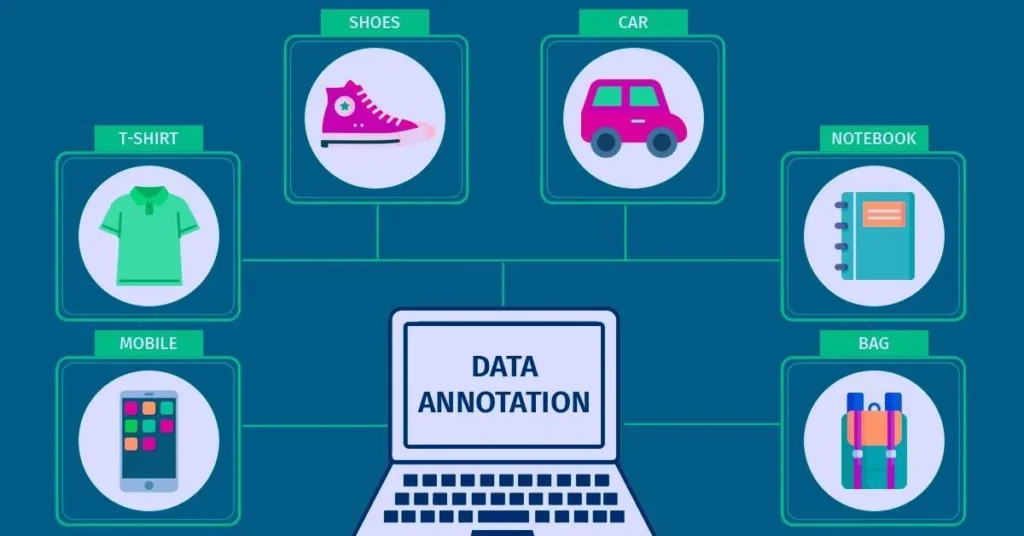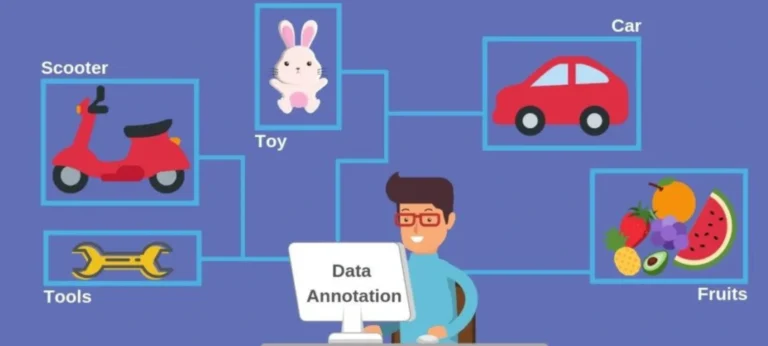What is Data Annotation?
Data annotation refers to the process of labeling or tagging data to enable machines to understand and learn from it. This vital step in machine learning ensures that algorithms can accurately interpret various types of information, which is crucial for their efficiency and effectiveness. In essence, data annotation transforms raw data into a structured format that can be used to train machine learning models.
There are several types of data that can be annotated, including images, text, audio, and video. For instance, in image annotation, objects within images are identified and labeled, enabling systems to recognize and classify these objects in visual data. Similarly, text annotation may involve tagging parts of speech, sentiment analysis, or identifying named entities within a document, thereby enhancing a machine’s ability to process and understand natural language. Audio annotations can include labeling spoken words, emotions, or speaker identities, while video annotation can involve tracking moving objects or identifying specific actions within a video.
The importance of high-quality data annotation cannot be overstated. Accurate annotations provide the foundational knowledge that machine learning models rely on to learn and make predictions. If the data is poorly annotated, it can lead to misleading results and incorrect model outputs. This is particularly critical in applications such as autonomous vehicles, medical imaging, and natural language processing, where the consequences of errors can be significant. High-quality annotations thus contribute to the reliability of AI applications and are, therefore, an essential element in the successful deployment of machine learning technologies.
Types of Data Annotation Techniques
Data annotation plays a crucial role in preparing datasets for machine learning models by adding context and meaning to raw data. Various techniques have emerged to facilitate this process, each tailored to specific needs and project requirements. The primary types of data annotation techniques include manual annotation, automated annotation, and semi-automated annotation.
Manual annotation involves human annotators carefully reviewing and labeling data. This technique is highly accurate, especially for complex tasks, as it allows for nuanced understanding and interpretation. However, it is time-consuming and may not be feasible for large-scale projects. Tools such as specialized annotation software can aid in managing workflow and ensuring consistency among annotators.
In contrast, automated annotation utilizes machine learning algorithms to label data. These algorithms can process vast amounts of data quickly, making this method highly efficient. Yet, the main challenge lies in the accuracy of the labels generated; automated techniques can struggle with ambiguous cases. Recent advancements in artificial intelligence have improved these methods, leading to better initial annotations that can be refined by human reviewers.

Semi-automated annotation combines elements of both manual and automated techniques. It typically involves an algorithm providing an initial set of predictions, which human annotators then refine. This approach can significantly reduce the workload on human annotators while maintaining high accuracy levels. Tools and platforms designed for this approach often include features that allow for feedback loops, enhancing the learning model’s future predictions.
Various tools and technologies are currently available to support these data annotation methods. Crowd-sourcing platforms connect businesses with a wide pool of annotators, allowing for rapid and cost-effective labeling. Additionally, specialized software provides functionalities tailored for specific types of data, like image recognition or text classification. Each annotation technique has its advantages and disadvantages, making it essential for projects to assess their data types and objectives to choose the most suitable approach.
Challenges in Data Annotation
Data annotation is a pivotal step in the machine learning pipeline, yet it is fraught with numerous challenges that can significantly impede the effectiveness of machine learning models. One of the primary challenges is scalability. As organizations amass vast amounts of data, the task of annotating this data becomes increasingly cumbersome. Traditional methods may struggle to keep pace with the growing volumes of data, leading to bottlenecks that can delay project timelines and hinder model training.
Another critical concern is the consistency of annotations. Variability in how data is labeled can arise due to differences in individual annotators’ understanding or interpretation of the guidelines provided. Such inconsistencies may lead to discrepancies in the training data, ultimately resulting in a model that performs unpredictably on new, unseen data. This issue is further compounded when multiple annotators are involved, highlighting the need for cohesive standards and protocols in the annotation process.
Bias in annotations also presents a significant challenge, as biased or unrepresentative data can severely affect a model’s performance and reliability. If certain demographics or perspectives are underrepresented, the resulting machine learning outputs may perpetuate existing stereotypes or inaccuracies. The implications of such biases can extend beyond technical performance, posing ethical concerns regarding fairness and accountability in automated systems.
To combat these challenges, organizations can implement several strategies. Employing robust quality control measures is essential to ensure accuracy and consistency in data annotation. Additionally, utilizing diverse annotator teams can mitigate bias and enhance the representativeness of the training datasets. Continuous training for annotators is vital to maintain high standards of data quality, ensuring that they remain aligned with the evolving needs of machine learning tasks. By actively addressing these challenges, organizations can enhance the quality of data annotation, thereby improving the overall efficacy of their machine learning initiatives.
The Future of Data Annotation
The landscape of data annotation is rapidly evolving, driven by advancements in technology and the growing need for high-quality labeled data within the artificial intelligence (AI) sector. One of the most significant trends is the rise of automated data annotation tools, which utilize AI algorithms to streamline the labeling process. These tools enhance efficiency, enabling businesses to process large volumes of data at a fraction of the time and cost associated with manual annotation. Automation is not only revolutionizing current practices but also expanding the capacity for annotation at scale, fostering the development of more sophisticated AI models.
In addition to automation, the emphasis on ethical data practices is becoming increasingly critical. Organizations are recognizing the importance of responsibly sourced and accurately labeled data, especially as concerns around data privacy and bias come to the forefront. The integration of ethical considerations into data annotation practices will likely lead to more standardized approaches and protocols, ensuring that the data used in machine learning models is both reliable and representative of diverse populations.
As industries continue to embrace AI applications, the demand for high-quality annotated data will surge. Sectors such as healthcare, finance, and autonomous vehicles will particularly benefit from robust data annotation strategies, as they require precise and contextually relevant datasets to train machine learning algorithms effectively. Consequently, workers in the data annotation field may witness increased job opportunities and the necessity for enhanced skill sets, particularly in areas related to data quality and management.
The future of data annotation looks promising, characterized by technological advancements, a commitment to ethical practices, and a growing necessity for expertly labeled data across sectors. These factors will undoubtedly shape the profession and influence how businesses approach data annotation in the years to come, paving the way for more innovative AI solutions.
